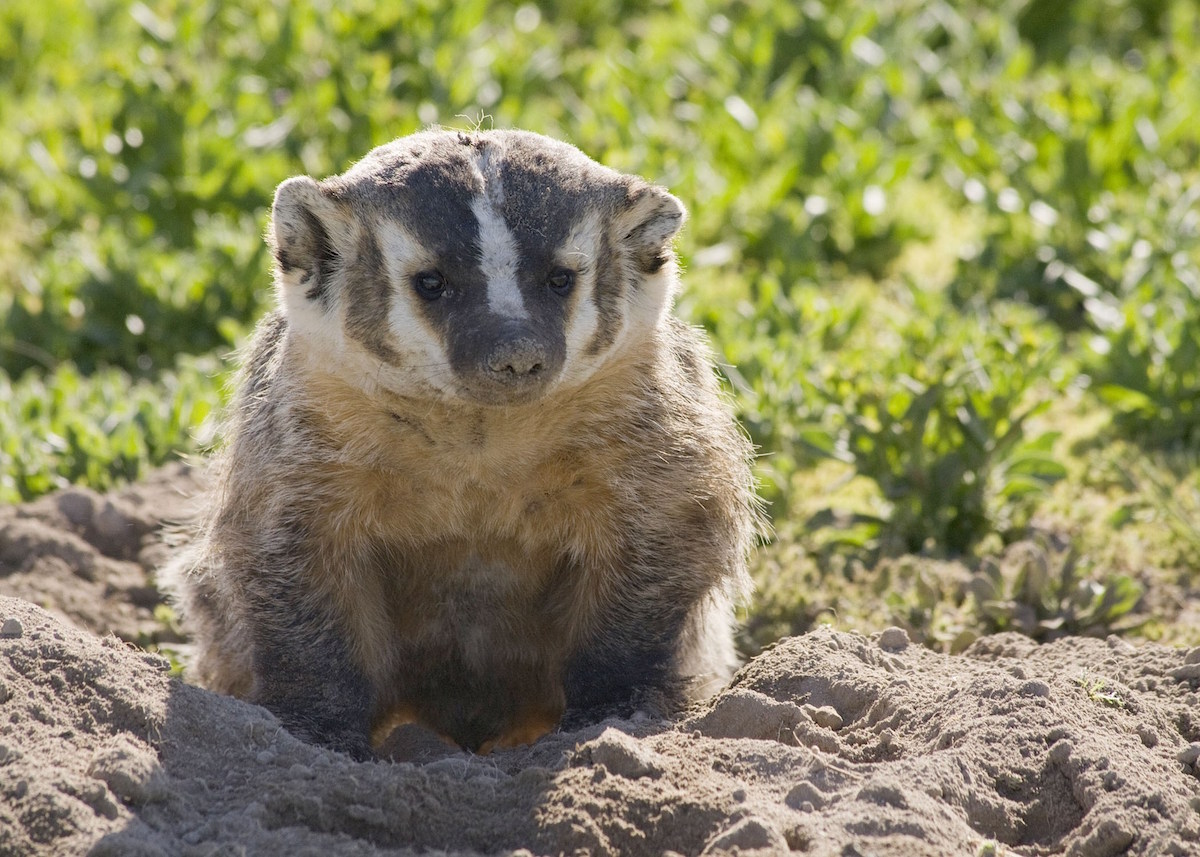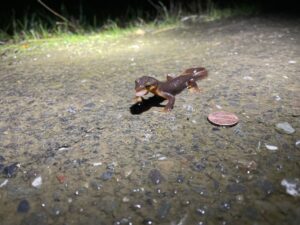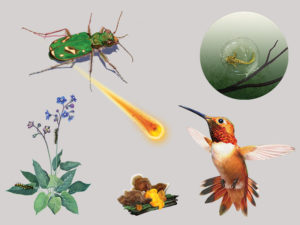Q: Do badgers hibernate during the winter? And if not, when *do* they emerge from their burrows? — Beth, Berkeley
A. The simple answer for American Badger in California is “no”.
The expanded answer is a bit more complicated. According to many researchers, the badgers go into a state of torpor, a period of around 29 hours where deep sleep slows their metabolism and conserves their energy. This may be a winter strategy for these mammals in colder climates.
A badger sighting is usually quite memorable, and often quite surprising. If you see a badger during winter months and during daylight hours, one of three situations is likely occurring:
(1) You’re in a remote enough area where the perceived threat from human encroachment is low. A young adult badger or a mature badger, male or female, may therefore be out foraging for prey during daylight hours.
(2) An adult female may have recently given birth and left her cubs in the burrow complex to forage during the day. She then returns to the burrow at night to provide warmth and safety for her young. Newborn badgers are blind and completely dependent on their mother for at least the first six weeks of life. A pregnant adult female generally gives birth in January or very early February.
(3) A young adult badger transitioning from the juvenile stage at about 1 year of age, in its first winter, may forage during daylight, if it feels safe, as it develops foraging and survival skills.
A factor in all 3 scenarios is availability of prey in the badger’s habitat and home range. This influences a badger’s timing to forage as well as ground area covered to assure adequate nutrition.
— Susan Kirks, Guest Naturalist
Susan is a badger ecologist and naturalist in her 17th year of direct field study and observation of American Badger. Recognized as the leading naturalist in California for the species, Susan’s focus is conservation of native habitat and wildlife connectivity areas to support badger survival. She helped found the nonprofit Paula Lane Action Network, which conserves a 100-year-old American Badger habitat in West Petaluma. Read more about the many years of dedicated effort to save American Badger habitat in Bay Nature.





